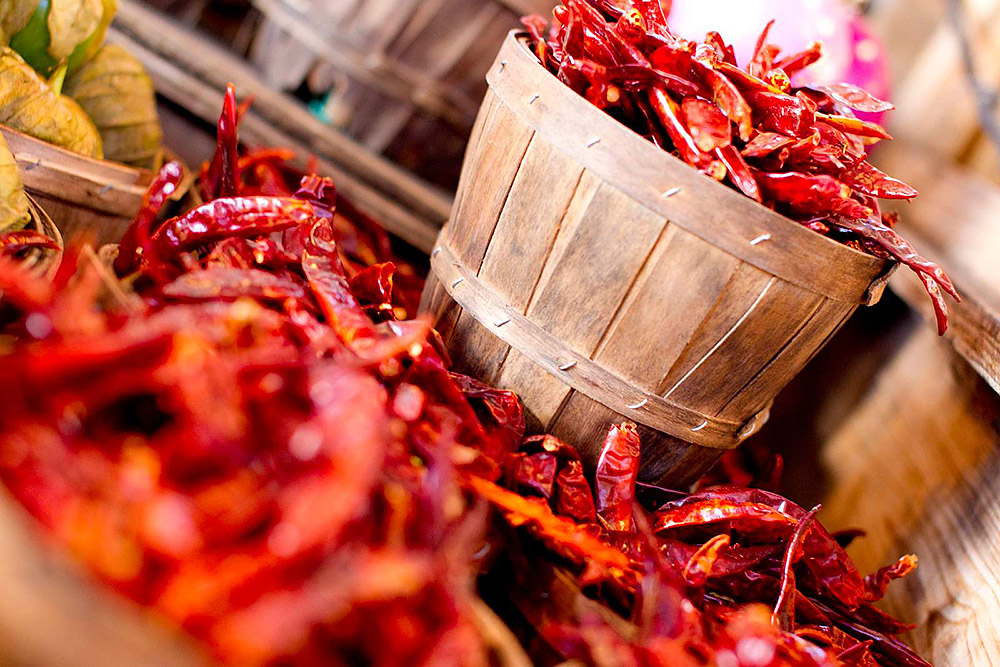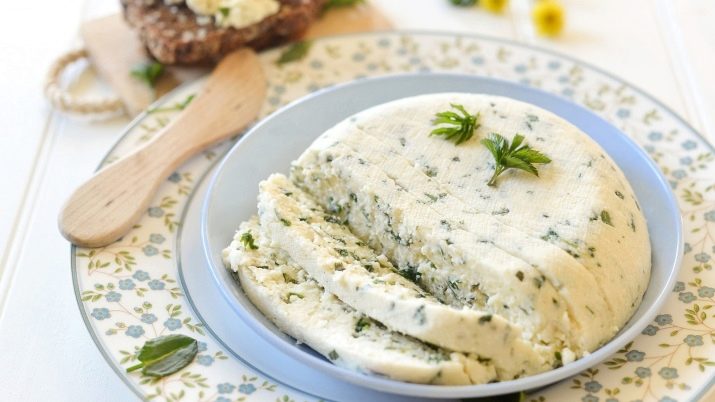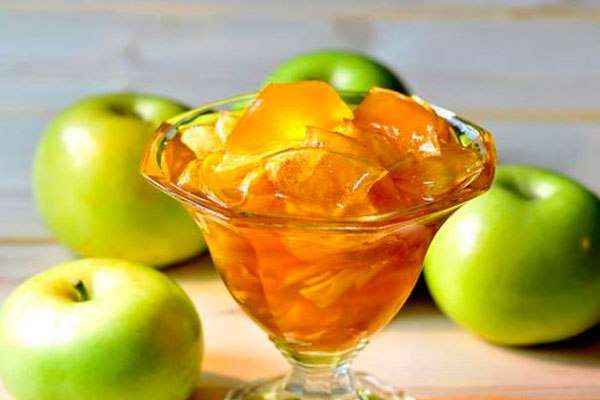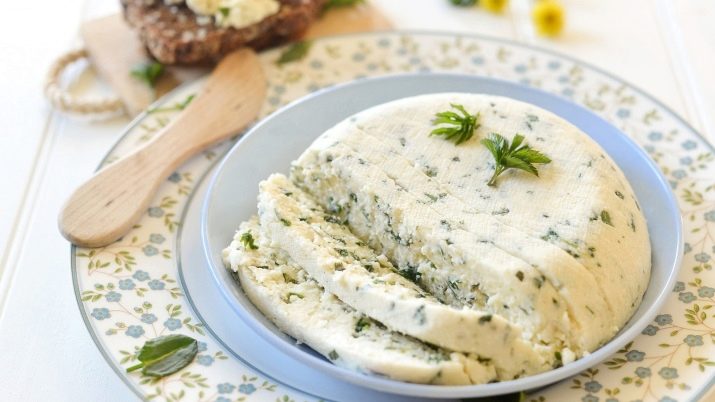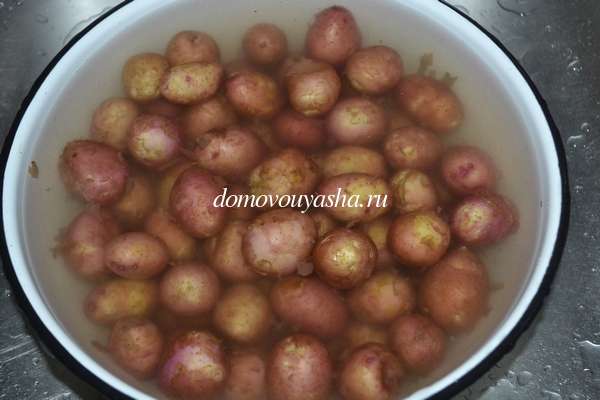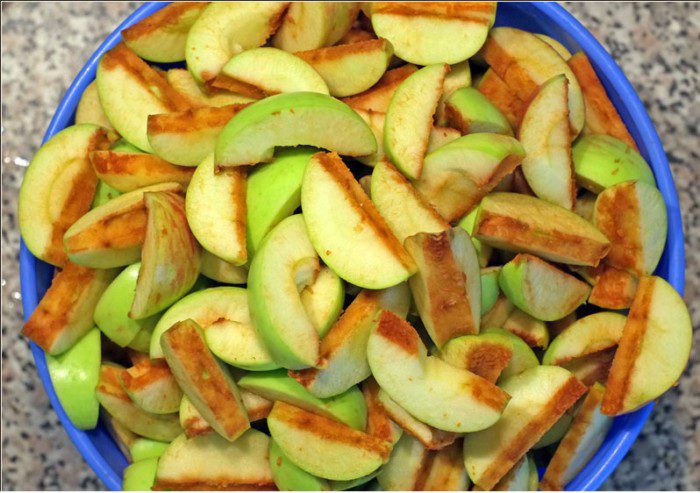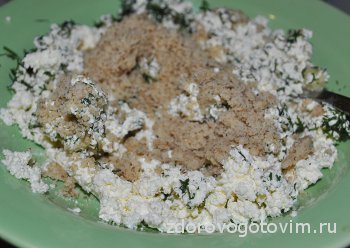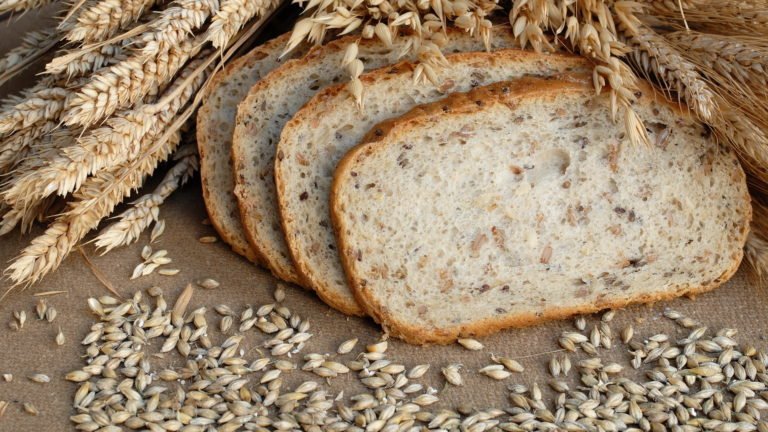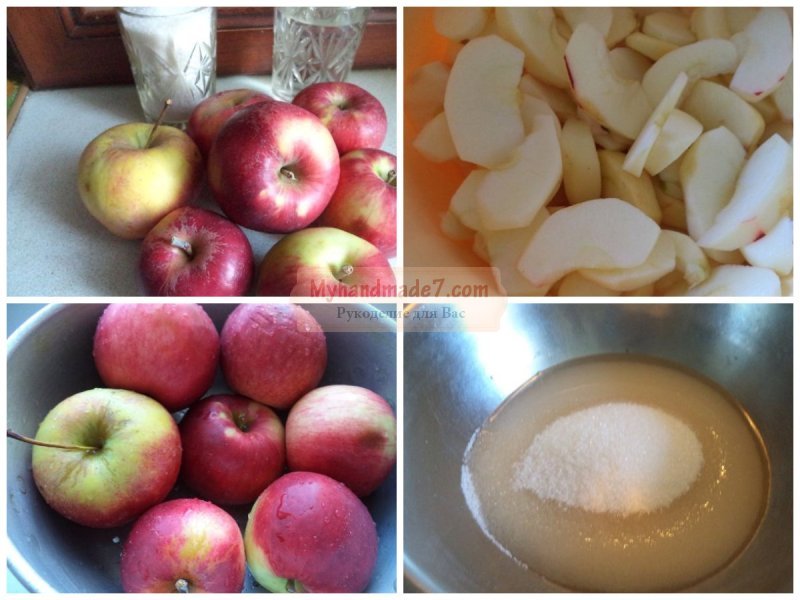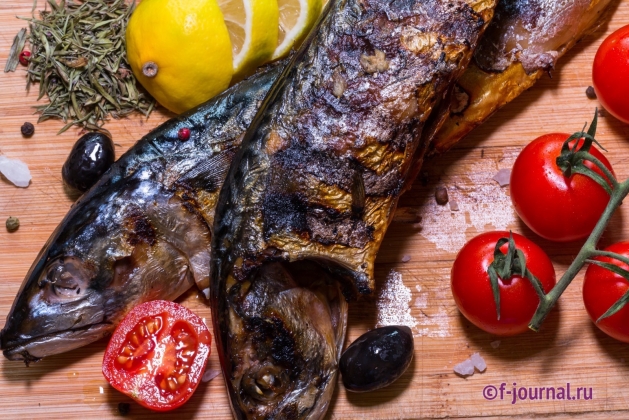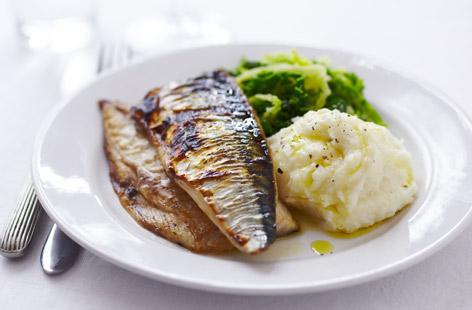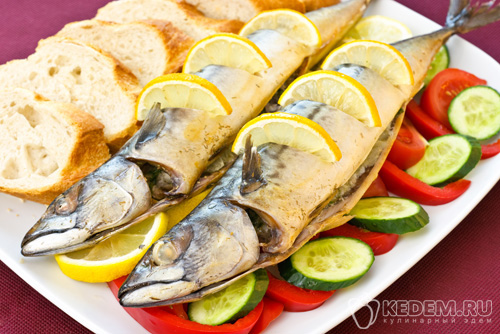The most delicious canning for the winter. Canning - recipes with photos for the winter at home
It is not difficult to make useful preparations - just replace the vinegar with the juice of red or white currants, gooseberries, tomatoes, and sugar with honey. Use the minimum amount of salt and gentle heat treatment of the workpieces - hot filling, triple pouring with boiling preservative solution and sterilization.
To preserve the color of berries and fruits during canning, add ascorbic acid (vitamin C) to the jar at the rate of 5 g of ascorbic acid per 1 kg of product. Ascorbic acid promotes the rapid displacement of vegetables and fruits from the air and thereby preserves their natural color.
A simple technique for preserving the green color of cucumbers is also known: before canning, they must be scalded with boiling water and immediately doused with cold water.
So that vegetables and fruits do not crack and retain their shape, they are pricked with a fork before canning - this is recommended when harvesting tomatoes, gooseberries, and fruits with delicate skin.
Rules for preparing vegetables and fruits for canning:
When processing white and red cabbage, the upper leaves are removed before treatment.
When processing Brussels sprouts, cabbage heads are cut from the stem and washed in cold water immediately before canning.
When processing cauliflower, the heads are lowered for 15 minutes in salted water to remove insects from it. Then divide the cauliflower into small "bouquets".
Kohlrabi cabbage is peeled and washed.
In young cucumbers, only the stalk is cut, and in large cucumbers, the stalk should be cut with a piece of pulp.
Tomatoes are washed, sorted and, if necessary, pricked with a fork in several places near the stem.
In pepper intended for stuffing, make an annular incision near the stem and remove it along with the seeds. In other cases, the pepper is cut lengthwise and then the stalk and seed core are removed.
The bean and pea pods are sorted, break the ends of the pods and remove the veins connecting the leaves. Very long pods can be cut into pieces.
Green onions are sorted and washed.
The onions are cut off the bottom, cleaned and washed in cold water.
The upper leaves are removed from the leek, in canning I usually use the white part, washing it well.
Spinach, sorrel and greens are sorted, the roots are removed and washed in plenty of water.
Zucchini and eggplant are washed, cut a thin layer of the skin (if necessary). Large zucchini and eggplant are cut into pieces, seeds are removed from the zucchini.
Fruit and berry blanks
To preserve the natural composition of fruits and berries during canning in recommended recipes, the following conditions must be observed:
absolute freshness and purity of harvested fruits, berries and vegetables;
minimal heat treatment necessary only to protect products during storage. The most rational method of conservation from this point of view is hot filling in a sterile container;
the addition of aromatic and medicinal herbs to canned foods;
the addition of juices of other fruits, vegetables and berries that fix the vitamins of the main raw materials (for example, table beet juice, red currant, honeysuckle, etc.);
adding licorice root to canned food (10 g of fresh root or 5 g of dry per 1 liter of preservative solution). Licorice root improves the nutritional properties of canned food and at the same time gives them healing properties. In the old days, our great-grandmothers made extensive use of licorice root when preparing food for the future, adding it to pickles and pickles.
Stacking
Pick fruits and vegetables of about the same size and ripeness. When stacking in cans, you will get more beautiful workpieces and without difficulty you can more evenly warm the contents of the can during heat treatment. Put vegetables and fruits in a jar should be tight, trying to fill the entire volume of the jar with fruits, minimizing the gaps between them. With a tight packing of vegetables and fruits, they usually occupy 60-70% of the volume of the can, and the remaining 30-40% is occupied by a preservative solution. In a three-liter jar, you can put about 2 kg of fruit, for filling which to the top you will need about 1.3 liters of marinade.
Storage of blanks
Store the workpieces in a dark, dry and cool place at a temperature of 4 to 15 ° C. Record the date of preparation of canned food: on the containers in which canned food is located, stick labels indicating the contents and date of preparation, as well as indicate the expiration date, based on recommendations. If a canned product has a suspicious smell, its color has changed, bubbles have appeared or the seal has broken, it is better not to risk it, but to get rid of this product immediately.
In well-maintained cabinets and closets, this rarely happens. Long-term storage is not the main reason for preserving food, and canned foods should not stagnate for long on shelves. Canned food can be kept for a long time, but, like any healthy food, they must be consumed for their intended purpose and at the appropriate time.
- August 14, 2010 00:40
- 129296

If you do not know how to preserve apples, I will tell you! Moreover, the recipe is very simple - no sterilization, pasteurization, everything is quick and without unnecessary trouble!

In winter, I want something summer, spicy, fragrant. Canned peppers are just such an appetizer. I love to eat them just with brown bread. Oil-soaked peppers are hearty and delicious.

I always preserve small bulbs for the winter. Then I use them in stew, as a snack with vodka or add to salads. It will take half an hour to preserve; working with it is easy, you don’t even have to cut it!

Now is the season of vegetables, and many are beginning to think about how to preserve the tomatoes growing in the garden. For fans of interesting recipes, I recommend learning how to cook tomatoes in tomato juice :)

Canned green beans - yellow and green - are used for salads, stews, soups, as well as an independent snack. There is nothing easier than preserving green beans.

Nettle contains vitamins C, A, K, and B. It has long been used for wound healing - both external and internal. Nettle is used as a food ingredient for salads, toppings and cabbage soup.

Canned beets are used for making salads, side dishes, decorating dishes, making okroshka with beets, etc. Preserving beets at home is very easy! See for yourself!
The stew was a purely Soviet invention, and a wide variety of dishes were prepared from it. Today, dishes with it are a delicacy, and homemade stew itself is a great way to preserve meat for long-term storage.

Canned squash - the same pumpkin, only they have the appearance of a painted flying saucer. Small canned fruits look great on the appetizer table. They turn out to be hard and crispy.

Gourmet dessert - canned pears. In your own juice, by the way. Such a pear looks great under chocolate or drenched in a bright syrup. A dish for those who love desserts and count calories.

Canned radish is a great appetizer that can crunch all winter. The taste of this radish is sharp-sour. Friends, seeing the radish on the New Year's table, groan and immediately sweep away everything!

Canned horseradish is an excellent accent of a hot dish or sauce. It is desirable that he be the one from whom tears flow (happiness, of course!). I offer a simple recipe for traditional white horseradish.

The leaves of grapes are preserved for the preparation of rolls with different fillings and, of course, stuffed cabbage. Canned grape leaves are sour, elastic and have a pleasant aroma of fresh leaves.

Canned garlic loses its pungency, but remains piquant, crunchy and resilient. Great snack! Such garlic is also used for salads, served with hot meat dishes.

Canned cucumbers with vinegar is one of the most common methods for harvesting cucumbers. The taste of cucumbers depends on the variety, pickling varieties are especially tasty. Recommend!

Learn how to preserve grapes, and a new original snack will appear on your table - juicy, spicy, fragrant grapes perfectly complement the taste of meat, liver, and can be used to make salads and canapes. Well, let's get started ?;)

If you know how to preserve champignons, then you are very lucky - this is an indispensable homemade preparation that can significantly save the family budget and diversify the winter menu. And if you don’t know, you are welcome, I’ll tell you!;)

Who doesn’t like canned corn? Children like her sweet and delicate taste; she often saves busy housewives who need to whip up a side dish or salad. Preserve!
In winter, it is advisable to eat hearty, vitamin-rich meals reminiscent of summer. This is canned beans for the winter. It is prepared simply and quickly, preserving all the good that summer gives us.

Canned asparagus is a great addition to any side dish, and in itself it is good. If you want to preserve asparagus - read this recipe and you will succeed.

Cabbage with garlic is a very simple and budget, but tasty harvest. Garlic gives cabbage a very unusual aroma and flavor - try it, lovers of garlic will definitely appreciate it! ;)

Tomatoes in their own juice are not only a good snack, but also a chic base for soups and sauces. And if there are also tomatoes from your garden, then they have no price! I offer you my simple recipe!

Asparagus haricot contains beneficial nutrients and vitamins. It grows even among lazy people, and canned is very simple. Canned asparagus beans are used to make stews.

Canned spinach is used for soups, sauces, as a filling in pancakes, meat rolls, scrambled eggs, side dishes and sauces. Spinach is cooked quickly, just as quickly and simply canned.
Most of us are used to buying green peas in the store, but cooked at home, it is much tastier, believe me! From this recipe you will learn how to preserve green peas, preserving the maximum of its nutritional properties and nutrients.

Garlic pickled tomatoes are one of my signature tomato harvests. They are prepared simply, not more complicated than other preparations, but they turn out to be very tasty, spicy, aromatic. Recommend!

If you not only love strawberries, but also try to make homemade preparations as useful as possible - this recipe is for you! How to preserve strawberries, preserving its taste, aroma and maximum vitamins, you will learn from this recipe.

If you do not know how to preserve sweet tomatoes, then this simple recipe is just for you. It turns out amazingly tasty tomatoes: for an amateur, of course, but many people like it :)

Few people prepare pickled tomatoes with apples, all the better - you can surprise your guests :) Tomatoes take round, solid, and apples are best Antonov. I share a simple recipe for the workpiece!

I really like pickled cherry tomatoes for their convenient size. If you take tomatoes of different colors, you get beautiful. If you haven’t tried to make pickled cherry tomatoes yourself, try it!

Few have tried canned cucumbers with ketchup! When the cucumbers have already been rolled in one way or another, and they all grow and grow, try the recipe for canned cucumbers with ketchup chili.

Cooking adjika from tomatoes is very simple. This appetizer will please fans of spicy. According to the classic recipe, adjika is cooked without tomatoes, but we break traditions and prepare our own version!

With canned sorrel, you can quickly and easily cook many dishes. Not sure how to preserve sorrel? Much easier than any other vegetables or greens! I tell you how.

It is not difficult to cook canned cucumbers without vinegar, the main thing is to take cucumbers of the desired pickled variety and size. It is good to make cucumbers in small banks, it is more convenient if the family is small.

I make canned cucumbers with onions when the main program for harvesting cucumbers is completed, but they all do not end and do not end. Try it, maybe you will like this simple recipe?

Your cold winter evening will be much better if you open a jar of cabbage with mushrooms. Yes, for boiled potatoes. Mushrooms and porcini mushrooms are suitable for this simple recipe for hodgepodge.

Canned crispy cucumbers - the real wealth of any housewife. In my arsenal there are several options for crispy cucumbers - I share one of them.

Bulgarian canned cucumbers differ in that horseradish, dill or garlic are not added to the cucumbers in the jars, but onions are put on. Pickles must be small, pickled varieties. Cooking!

My recipe for cabbage hodgepodge for the winter does not involve pickling, but preservation. In addition to cabbage, I add tomatoes, onions and carrots. This hodgepodge can be used for appetizers, salads and various fillings.

Canned peaches are a fantastic dessert. The contents of a large can in the winter disappear in an instant! So roll up more! By the way, you will get not only peaches, but also delicious compote.

My pickled cucumbers with mustard come to an end first. No matter how you do it, they still will not reach spring :) The recipe for pickled cucumbers with mustard was borrowed from my mother-in-law. Sharing!

Canned sweet crispy cucumbers are no worse than store ones. If you take small cucumbers, you will get delicious jars that will quickly disappear from the bins. Here is the prescription!

Remember baby puree? Especially from apples! I always tried to “steal” at least a little sister. Yummy! And the muffin with mashed potatoes? Real jam! I suggest making applesauce for the winter.

My favorite canned juice for the winter is apple juice. Fresh, sour, rich in vitamins, bright golden color. By the way, it is indicated for those who complain of stomach problems and want to lose weight.

Of all the savory snacks for the winter I want to highlight the sharp eggplant. Their taste is incredible. Making a snack at home is very simple. Lovers of spicy will be delighted! ;)

This winter eggplant appetizer is very bright, both in color and in taste. In addition, she is spicy and nutritious. In winter, you will definitely bring back the blush on your cheeks! Be sure to cook it at home!

Blue lovers are dedicated to this recipe. Korean-style eggplants for winter are served with carrots, bell peppers and onions. All vegetables retain their juiciness and "fresh" taste. In winter, such a jar is a godsend!

This eggplant salad recipe for the winter is designed for those who like spicy foods and keep an eye on calories. Although it is highly recommended to everyone else too! It preserves all the vitamins of fresh vegetables.

Legumes contain many vitamins we need. Therefore, dishes with them are hearty and nutritious. Bean and bell pepper salad for the winter is an excellent preparation, both nutritious and tasty.

In order to put the pears in their own juice for the winter, you only need a pinch of citric acid, water and jars. Well, pears, of course! Fruits are best taken unripe, medium size.

Eggplant steak is my favorite variation of this dish. Make it very simple, and the ingredients can be added to taste and preference. Lecho prepared using this recipe can be preserved.

This recipe is designed for one liter jar and allows you to keep the dish in the refrigerator for a year! No conservation! I advise you to choose young medium-sized eggplants for preservation.

Stuffed eggplant is a very beautiful and tasty appetizer. For her, it is better to choose the same size eggplant. You can enjoy such a snack for six months, it is perfectly preserved.
1. TOMATOES SUPER!
Be sure to recommend this recipe. Tomatoes are super! A pickle! In general, this recipe must be closed - you will not regret it.
Cooking:
We select tomatoes of the same size, any as you like.
My, put in sterilized jars.
Pour boiling water, stand for 5 - 7 minutes, pour into a saucepan, add to the portion of the drained infusion from each 3 l cans.
2.5 tbsp. l salt, 4 tbsp. l sugar, 5 cloves, 10 peas of black pepper, a pinch of ground red pepper, 2 bay leaves, 2 peeled garlic cloves.
We bring everything to a boil, at the time of boiling pour into the brine 1 tbsp. l vinegar essence and vodka, pour into a jar, roll up, turn over. After cooling, turn back and store as usual.
The taste is extraordinary, the brine is drunk as a pleasant drink. Despite the presence of vinegar, it is not felt at all!
2. PREPARATIONS: WRAPPED WITH GARLIC

If you were not able to close the mushrooms this year, then such an alternative to mushrooms will come in handy. These are delicious eggplant with garlic. They go very well in the winter to potatoes, and as just a snack, and in fasting, it’s so nice to eat them. Yummy!
Ingredients:
5 kg eggplant
0.5 l of vegetable oil
500 g of salt
150 g garlic
For marinade:
5 l of water
200 g 9% vinegar
Pour with salt, mix and leave for an hour:
Rinse thoroughly. Put in boiling marinade and cook for 7 - 10 minutes. Drain the broth.
In hot eggplant, immediately add vegetable oil and finely chopped garlic.
Stir and place in sterilized jars.
Roll up, turn over, wrap and leave to cool completely.
3. BULGARIAN PEPPER WITH HONEY.

Well, do you still have pepper? Did you make such a preparation of pepper according to this recipe? If not, then try, if anyone else does not know this recipe. Bell pepper with honey is very tasty. The smack of honey is not audible, but the pepper itself is very aromatic.
Cooking:
Sweet pepper - 5 kg,
Water - 3 L
Garlic - 10-12 cloves.
Vegetable oil - 200 ml
Vinegar (in the recipe was 9% 400 ml, it seemed to me a lot, so I added less) - 200 ml,
Honey - 0.5 tbsp. (in the original 1 tbsp.)
Salt (without slide) - 2 tbsp. l
Bay leaf - 3 pcs.,
allspice and black peas for 5 pcs.
Wash the pepper and peeled garlic, let it drain in water, cut the pepper in half, lengthwise, remove seeds and partitions.
Prepare jars and lids (I got 4 cans of 1 liter each)
Boil water in a convenient deep dish with wide edges, add vinegar, oil, garlic, pepper in a pot, honey, salt, bay leaf, vegetable oil, mix when the marinade boils, lower the pepper in portions, drown it so that it is completely in the liquid, After boiling, cook over medium heat for 10 minutes until the pepper is soft, but do not digest.
Then turn off the fire, spread the pepper tightly in layers into jars with a spoon, pour the marinade to the neck, immediately clog it, turn the jars upside down and wrap until cool.
4. VEGETABLE SALAD WITH MUSHROOMS

I bring to your attention a delicious vegetable salad with mushrooms. The workpiece is very simple, does not require much time for cooking. Fast and tasty! Meet:
Ingredients:
1 liter of vegetable oil
1.5 kg of carrots,
1.5 kg of onions,
1.5 kg of cabbage,
3 tbsp. l Sahara,
1.5 kg of cucumbers,
1 tbsp. l vinegar essence
½ kg of sweet pepper
300 g of boiled mushrooms,
2 kg of tomatoes.
Boil the oil, add chopped carrots, boil for 5 minutes. Add onion rings, cook for another 5 minutes. Pour sugar and shredded cabbage and cook again for 5 minutes. Put in the salad all the other ingredients, mix and cook the salad for 30 - 40 minutes. Arrange on sterilized banks, roll up.
5. Winter cabbage with eggplants

For those who love cabbage and eggplant. Now you can try this couple right away. The appetizer is excellent. The recipe is not complicated. Such cabbage with eggplant can be stored with you all winter. And probably everyone knows how to teach. Watering with vegetable oil with the smell of sunflower seeds, you won’t drag the bulb there and by the ears.
To prepare eggplant with cabbage for the winter you will need:
eggplant - 1 kg;
fresh cabbage - 1 kg;
carrots - 300 g;
garlic - 10 cloves;
hot pepper - to taste;
black pepper peas - 10 pcs.;
salt - 1.5 tbsp. l .;
vinegar 9% - 0.5 tbsp. (or to taste).
- Salt and vinegar can finally be adjusted to your liking.

On top you can cover with a plate so that the eggplant does not float and everything is completely boiled the same.

When the eggplants are cooked, put them in a bowl and cool.

While the eggplant is cooling, finely chop the fresh cabbage and put in a large bowl.

Grate the carrots on a coarse grater and add to the cabbage.

Cook hot pepper and garlic.

Finely chop the hot pepper and let the garlic pass through the garlic squeezer.

Add garlic and hot pepper to cabbage with carrots. Also add pepper peas. Mix everything thoroughly.

Also add pepper peas and mix everything.
Add garlic and hot pepper to cabbage with carrots. Also add pepper peas and mix everything.

Cut cooled eggplant into cubes of about 2 cm.

Add chopped eggplant in a bowl to other vegetables, add salt and vinegar. To stir thoroughly. Finally adjust the salt and vinegar content to your taste.
Transfer eggplant and cabbage into jars, put in a cool place for storage. Banks can be closed with plastic or screw caps. A sample can be removed after a week.
6. Beetroot Salad with Prunes

Loved the recipe for beetroot salad with prunes. What attracted was a salad without a gram of oil. An excellent variant of the workpiece, which can be used as a snack, as a sandwich mass, flavored with mayonnaise, rust. butter or sour cream, or it can just be an additive in any dishes where beets are well combined. You can use it at your discretion and your taste.
Ingredients:
beets - 1 kg
pitted prunes - 200-300 g
honey -2 tbsp. l.,
salt - 1 tbsp. l.,
cloves - 4 - 5 buds
black pepper -
5 to 6 peas,
vinegar 6% -
0.5 tbsp. (less possible)
Wash the beets well, peel them and grate on a coarse grater.
Wash the prunes and pour boiling water for 5 minutes, then drain the water.
Add prunes to beets, mix everything well and put the beetroot salad in sterilized jars.
Prepare the fill: dissolve salt, honey in 1 liter of water, put pepper and cloves and add vinegar, bring to a boil and cook for 2 minutes.
Pour the beets in jars with boiling marinade, cover the jars with boiled lids.
Sterilize jars of salad in a pan with low-boiling water (or any other method), 0.5 L - 15 minutes, 1 L - 25 minutes.
Then immediately roll up the cans, turn upside down, wrap and leave to cool completely.
Store beetroot salad for the winter in a dark and cool place.
7. EGGPLANT WITH BEANS AND VEGETABLES

I really like this preparation for the winter, I directly recommend you cook it, unless, of course, whoever does not have such a recipe, it has long been popular and many do. Delicious!
For 2 kg of eggplant:
500 g dry beans
1.5 kg of tomatoes
0.5 kg of sweet pepper
0.5 kg of carrots
200 g of garlic
1 tbsp. with a hill of sugar
2 tbsp. l with a slide of salt
100 ml of vinegar 9%,
0.5 l of vegetable oil
Soak the beans overnight. Boil until cooked: 
Grind tomatoes with garlic in any way possible:
Put salt, sugar, vinegar, oil in the tomato mass, bring to a boil and boil for 5 minutes. 
Add diced bell peppers: 
Coarsely chopped eggplant. 
Semi-finished beans. 
Cook, stirring frequently, for about 50 minutes. 
Arrange the hot mass in sterilized jars and roll up. 

Wrap until cool.
8. VEGETABLE ASSORTIES, MARINATED IN VINEGAR WITH SPICES.

Such an appetizing snack in the winter for potatoes, I think it will be just the same "that"!

You can use a variety of vegetables, preferably small varieties (cucumbers, tomatoes, onions, apples of paradise, cherry plum ...).
If large - cut into portioned slices or circles (carrots, peppers, zucchini or squash, cauliflower ...).
Some vegetables, like green beans and corn, should be blanched for several minutes in boiling water.

In general, the set of vegetables can be different.

MARINAD per 1 liter of water:
4 tsp salt
6 tsp Sahara
1 tbsp. l vinegar essence
1 - 2 bay leaves
4 - 6 pcs. allspice
8 - 10 pcs. black pepper
Boil the marinade (except vinegar). Pour vinegar essence into the already turned off marinade (carefully - it can foam very much).
Let it brew for 15 to 20 minutes. 
On the banks, lay out a standard set of greens - dill, horseradish, cherry leaves and black currant. You can use lovage, lemon balm, tarragon to your taste.
Next - lay the vegetables in layers and pour the filtered marinade.
Sterilize 3 L cans - 30 minutes.
9. SECRET RECIPE OF AWESOME CUCUMBERS

These pickled cucumbers have an amazingly delicious taste, and we call the recipe for preserving cucumbers "lick your fingers."
Do you want to please your family in the winter with cool pickled cucumbers? No, not the ones that show off in banks on supermarket shelves. The taste and color, of course, have no friends, but, in my opinion, pickling cucumbers at home is incomparable. We have long been closing cucumbers for the winter according to one interesting recipe, and every time until the spring, not a single jar survives.
Products:
Cucumbers - 4 kg,
Parsley - 1 bunch
Sunflower oil - 1 tbsp. (200 ml)
Table vinegar 9% - 1 tbsp.,
Salt - 80 g
Sugar - 1 tbsp.,
Ground black pepper - 1 dl.,
Garlic - 1 head
Weigh out 4 kg of cucumbers, young, small. Of course, we wash away all the dirt and dust from them. You can slightly trim the ponytails and spouts.
Those cucumbers, which are larger, are cut lengthwise into four parts: first in half, the halves still in half. The smaller ones are cut in half along. Put the prepared cucumbers in a pan.
Finely chop a good bunch of parsley and send to the cucumbers. Add to the pan 1 tbsp. sunflower oil, a glass of 9% table vinegar and 80 g of salt (do not add 100 g of a glass to the top on your finger).
That's not all. Pour a glass of sugar and a dessert spoon of black ground pepper into the resulting marinade for cucumbers.
We sort the middle head of garlic into cloves, cut them into thin slices and into the casserole pan.
Everything, like all the components listed. It remains to wait 4 to 6 hours. During this time, the cucumbers will start up juice - pickling will take place in this mixture.
You can shake the pan several times so that the cucumbers in the marinade are mixed.
After the necessary time has passed, we take prepared cans and fill them with cucumber slices: with a fork we take a piece and, tilting the jar a little, set it vertically. And so, until the bank is full. If the jar is not full, lay another layer of cucumbers horizontally.
Pour the cans to the top with the remaining marinade in the pan, cover with prepared lids and sterilize for 20 - 25 minutes.
We get it, roll it tightly and congratulate ourselves on the fact that they closed the delicious cucumbers in oil.
Put the jars upside down, wrap with towels until they cool completely.
10. TOMATOES CANNED WITH GRAPES

What is the taste of tomatoes with grapes
These pickled tomatoes are unexpected, with a special, very pleasant taste, which is difficult to unravel if you do not see that the tomatoes were canned with grapes.
A light fruity note ennobles the taste of tomatoes, giving it grace and sophistication.
This blank for the winter not only tastes good, but also looks very impressive and unexpected. A jar of beautiful canned tomatoes with grapes can easily be presented as a gift when visiting friends.
Sweet grapes also turn out to be special, spicy-brackish.
This is a very tasty meal for a winter feast! A piece of bright summer in a plate!
This blank is very tasty and beautiful! 
Very tasty tomatoes with a spicy taste. Grapes can be served as a separate original snack.
It is very simple to close tomatoes with grapes, on the principle of compote.
Proportions for the conservation of tomatoes and grapes in 3 liter jars or one 3 liter.
Small tomatoes - 2.5 - 3 kg;
Bulgarian sweet pepper - 1 pc.
Grapes - 1 brush (white or black);
Greens and spices for pickling (salting);
Hot chili pepper - 1 pc. (optional);
Garlic - 3 cloves;
Bay leaf - 2 - 3 pcs.;
Currant and cherry leaves - 3 to 6 leaves each;
Black pepper and cloves - 9 pieces (3 in each jar);
Horseradish - 1 large leaf or piece of root;
Dill - 3 branches;
For brine (marinade):
Salt - 1 tbsp. l.,
Sugar - 1 tbsp. l
Boiled water.
Prepare jars and lids. Rinse, sterilize.
Rinse vegetables and herbs. Peel sweet peppers from seeds, cut into slices, hot - slices or rings (it is possible with seeds, if you like hot). Separate the grapes from the twigs. Peel the garlic cloves and horseradish root.
Put in each jar on the bottom - greens, spices, garlic, hot pepper and horseradish, then - tomatoes, sprinkled with grapes and stick the pepper strips in the free space. Sprinkle with sugar and salt. Pour boiling water and let stand for 15 to 20 minutes.
Carefully drain the resulting marinade, boil it and pour the tomatoes on it again. Roll up the covers.
Store in a dark, non-hot place.
Preservation technology recipes - basic principles and methods
Canning - This is the generalized name of the method of preserving for a long period various products (vegetables, berries, fruits, mushrooms, meat, fish) from spoilage through a certain culinary processing. In general, canning be called any process that allows you to extend the shelf life of a particular food.
The technology and principles of canning at home vary depending on what method this process is carried out. Consider this issue in more detail.
Pickling. Pickling is perhaps the most famous and popular method of preservation for the winter. It is based on the fact that any organic acids are added to the workpiece, most often table vinegar or citric acid. It is these components that inhibit the activity of pathogens. Products prepared by pickling, at home should be stored at low temperatures. Basement or cellar is the best place for this.
Salting. Preservation by the method of salting is based on the impregnation of a product with eight or twelve percent saline. Salt draws water and creates an environment for microorganisms that is not suitable for their reproduction, and indeed the existence of the whole. On the one hand, this method is good, but it also has disadvantages. So, for example, some useful substances from the product itself go into brine. In addition, when using a salted product, an excessive amount of salt enters the body.
Chanting. This method of preserving for the winter by the principle of action is similar to salting, with the only difference being that sugar is used instead of salt. The disadvantage of this method is that with a lack of acidity of the initial product, all kinds of molds can form.
Fermentation. Fermentation is a conservation method that is a cross between salting and biological preservation. The presence of salt at the initial stage of all fermentation recipes suppresses the pathogenic microflora. Bacteria found on canned fruits ferment sugar in it. The result is lactic acid. It is she who, to a greater extent, saves the product from spoilage.
There are also home canning methods based on eliminating water from the product. These include not only, but also drying, smoking, gelling.
The basic principle of preparing this type of food is that a product that has been preserved by one method or another is placed in a pre-sterilized jar, after which it is tightly rolled up with sterilized lids.
As a rule, sterilize cans for a couple. This is a classic method. However, they can be sterilized by calcining in an oven or microwave or using any other acceptable method.

Home canning is usually carried out by heat treatment in hermetically sealed glass containers. At the same time, vinegar or vinegar essence is added to vegetables and salads to neutralize the activity of pathogenic microbes.
Traditionally, there are 2 methods for heat treatment of home canning products:
- pasteurization - heating products to 100 degrees, which allows you to destroy and neutralize the vast number of microorganisms;
- sterilization - heating of products over 100 degrees, which completely destroys and destroys the microflora responsible for food spoilage.
In all cases, home canning involves laying food in clean glass sterilized steamed or in the oven cans.
For both sterilization and pasteurization, you will need a large pot, on the bottom of which a wooden grate is placed and a towel is placed on top (to avoid cracking the jar). During the installation of the cans of food in the pan, carefully monitor that the cans do not come into contact with each other and with the walls of the pan. Water reaches the upper level and does not get inside (the cans are covered with pre-boiled lids, but not twisted). It is important that in the pan where pasteurization / sterilization takes place all glass jars are of the same volume. After the end of the heat treatment, the cans are carefully removed and closed with a seaming key, then turned upside down (to check tightness of the twist) and wrapped in a blanket until it cools completely.
Types of canning for the winter at home
There are hundreds of types of home canning. It is simply not possible to list them all. However, one of the species, in particular, canning by type of food, we will consider in more detail. Berries, fruits, mushrooms, vegetables, meat, fish are too dissimilar products, which means that the preparation of each of them at home for the winter has its own characteristics. Further, we will focus on them.
Mushrooms
Preservation of mushrooms by any method, first of all, begins with their choice. Young strong mushrooms are best suited. The use of overripe and wormy options is best eliminated. Mushrooms must be sorted. Mushrooms can usually be preserved by type, but mushroom assortment can also be made.
The next stage is the cleansing of mushrooms of various kinds of pollution. Then the roots are cut off to the mushrooms and damaged areas are cut out. Instances of a small size canned whole, and large ones are pre-cut. 
It should be borne in mind that some edible mushrooms (mushrooms, mushrooms, mushrooms, and others) darken at the incision site, so they should be worked on as quickly as possible. After cutting, it is best to place such mushrooms in cold saline with a small addition of citric acid.
 Each type of mushroom has its own specific preservation, and the preservation method suitable for one mushroom may not be suitable for another. So, for example, you can pickle some lamellar mushrooms: greenfinch, chanterelles, honey agarics, row of mushrooms, saffron mushrooms, champignons, as well as almost all tubular mushrooms: aspen, boletus, oily and finally porcini mushrooms. But the sharp-tasting mushrooms or milkers are best salted. Almost all edible mushrooms are suitable for fermentation, but only a few are suitable for drying - porcini mushrooms, moss mushrooms, oily, boletus and boletus.
Each type of mushroom has its own specific preservation, and the preservation method suitable for one mushroom may not be suitable for another. So, for example, you can pickle some lamellar mushrooms: greenfinch, chanterelles, honey agarics, row of mushrooms, saffron mushrooms, champignons, as well as almost all tubular mushrooms: aspen, boletus, oily and finally porcini mushrooms. But the sharp-tasting mushrooms or milkers are best salted. Almost all edible mushrooms are suitable for fermentation, but only a few are suitable for drying - porcini mushrooms, moss mushrooms, oily, boletus and boletus.
When preserving mushrooms at home for the winter, you need to be sure that the collected mushrooms are edible and follow all the instructions of the recipe that you have chosen. Improper heat treatment of fungi can lead to the development of botulism in conservation, which, as you know, seriously affects the central nervous system and can lead to death.
Vegetables
Canned vegetables for the winter are a fairly popular type of preservation. The variety of recipes for their preparation amounts to hundreds of thousands. Even the usual canned tomatoes and cucumbers have many cooking variations.
 It is best to use canned vegetables only in the garden for canning. However, if this is not possible, then the freshness of a product when choosing, it is worth paying special attention. Without vinegar, a limited number of vegetables can be preserved. These include tomatoes, rhubarb, sorrel. This is due to the increased acidity of these products. Saving other vegetables for a long period without vinegar is simply not possible.
It is best to use canned vegetables only in the garden for canning. However, if this is not possible, then the freshness of a product when choosing, it is worth paying special attention. Without vinegar, a limited number of vegetables can be preserved. These include tomatoes, rhubarb, sorrel. This is due to the increased acidity of these products. Saving other vegetables for a long period without vinegar is simply not possible.
To improve the taste characteristics of home preservation of vegetables, many recipes recommend adding spices and spices in dried form or fresh herbs. In addition, such additives improve the flavor of the dish. Also, herbs in glass jars with pickles look very attractive, and, one might even say, are an element of decor.
Fruits and berries
 At home, preserving berries and fruits allows you to keep these healthy products for the winter, and in a very tasty way. Compote, juice, mashed potatoes, jam, jam, jelly, confiture, marmalade, jam, syrup, candied fruit are prepared from fruit and berry raw materials. In addition, fruits and berries can be pickled, as well as fermented (soaked). Drying is also available for such products.
At home, preserving berries and fruits allows you to keep these healthy products for the winter, and in a very tasty way. Compote, juice, mashed potatoes, jam, jam, jelly, confiture, marmalade, jam, syrup, candied fruit are prepared from fruit and berry raw materials. In addition, fruits and berries can be pickled, as well as fermented (soaked). Drying is also available for such products.
As in the case of vegetables, the basic principle when preserving fruits and berries is their freshness. Only in this case you can get a really tasty and healthy preparation for the winter.
Meat
Meat is a fairly popular product for canning, including at home. Most often, poultry meat, game, pork, rabbit meat are used for harvesting. However, this does not mean that such types of meat as lamb, veal, and beef are not suitable. They can also be preserved. In addition to the meat itself, some offal may also be preserved.
 When choosing meat for canning, you should not take the meat of those animals that are severely depleted or are ill with something. It contains a lot of microbes, and therefore it is rather difficult to preserve it. For the purpose of conservation, you should not take the meat of too young animals, as well as young animals during the growth period, since such a product contains a lot of water, and therefore the meat is too boiled during cooking. Also, do not use fresh meat, it should be well chilled and “seasoned”.
When choosing meat for canning, you should not take the meat of those animals that are severely depleted or are ill with something. It contains a lot of microbes, and therefore it is rather difficult to preserve it. For the purpose of conservation, you should not take the meat of too young animals, as well as young animals during the growth period, since such a product contains a lot of water, and therefore the meat is too boiled during cooking. Also, do not use fresh meat, it should be well chilled and “seasoned”.
Meat is rolled up both raw and pre-cooked. For canning, cans or glass jars are usually used. After laying the feedstock in a container, it is sealed, and then the canned food is subjected to the sterilization process. The last process at home occurs in boiling water at a temperature of one hundred degrees. On an industrial scale, autoclaves are used for sterilization, which make it possible to reach temperatures of more than one hundred degrees, but it is important not to overdo it, otherwise the nutritional value and taste of the meat will be irretrievably lost.
Ready preservation from meat is important to store properly - in a dark, cool place at a temperature of no more than fifteen degrees. At the slightest sign of damage to the clogged product, you should abandon it. Otherwise, you can cause irreparable damage to health.
A fish

Preserving fish at home, despite the abundance of canned fish in the store, does not lose its popularity. Canned self-made can cause far less concern than canned food produced on an industrial scale.
What kind of fish can be used for canning? The answer is banal - any! From river fish it is best to preserve crucian carp, perch, ruff, carp, bream, roach. From the sea - pink salmon, saury, herring, mackerel.
In preserving fish, it is important to act strictly according to the instructions of the recipe, so that the product does not deteriorate and does not cause harm to health. Particular attention should be paid to the cleanliness of products, cans and lids for corking, the necessary tools and devices. In addition, attention should be paid to thoroughly corking and sterilizing home-made canned fish.
To summarize ...
So, if you have a desire to do home canning, be it mushrooms, vegetables, fruits, berries, meat or fish, first, find the appropriate recipe in this section of the site. He will tell in detail and demonstrate each stage of cooking. Perhaps this is due to the fact that each recipe is equipped with step-by-step photos.
Arm yourself with one of the step-by-step photos of recipes for preparing canned food at home, and then go to the kitchen to create another culinary masterpiece, which can be saved until winter.
We offer an easy way to preserve pickled tomatoes with peppers for the winter. We hope that our original and delicious recipe will appeal to both beginners and experienced cooks.
How wonderful it is to get a jar of delicious pickled mushrooms in winter, season with aromatic vegetable oil, add finely chopped green onions and serve with boiled potatoes! I will tell you how to close such mushrooms.
Cucumber treat with the addition of tomato puree and slices of pepper is an obligatory preparation for the winter in our family. Such preservation is easy to prepare and perfectly stored on the shelf for up to two years.
Decoration of any table will be a vegetable salad prepared for the winter according to the Moldovan recipe. The main thing is that the salad is very tasty, easy to prepare and well stored.
The sauce will make any dish tastier and brighter, especially if it is made from tomatoes and onions with the addition of hot pepper. I offer a tomato sauce recipe for preservation for the winter.
You can count hundreds of recipes for canning zucchini. I propose a simple but interesting way to harvest an excellent vegetable snack for the winter - zucchini pickled in its own juice and spices. I like this salad and the simplicity of preparation, and a bright spicy taste.
Hand-made pickled vegetables are a great addition to second courses and salads in the winter. Pickle cucumbers with tomatoes in a simple way, guided by our recommendations.
If you like dolma, then it's time to arm yourself with a recipe for harvesting grape leaves. Having spent quite a bit of time in the season, after that everyone will be able to please themselves with a tasty and mouth-watering dish.
Pickled grapes are good on their own, but if you put them on the table as a snack, combine spicy berries with lemon and slices of good cheese. You can complement the composition with cubes of ham and bread.
Fleshy and juicy bell peppers can be turned into an excellent appetizer if cooked in a marinade in Armenian style. To achieve a spicy taste, we will add garlic, celery, dill and other spices.
Eggplant stuffed with garlic, herbs and hot peppers is an excellent vegetable appetizer that will certainly impress you. Eggplants are soft, spicy and slightly sour.
We suggest you try to prepare tomato juice for the winter according to the simplest and most proven recipe. Homemade tomato juice can be used as a drink, used to prepare first and second courses.
If it’s getting colder in the yard, and in your garden there are green unripe tomatoes - it’s not a problem. I propose to prepare them for the winter in the form of a salad, adding sweet pepper, carrots and onions to the vegetable mixture.
